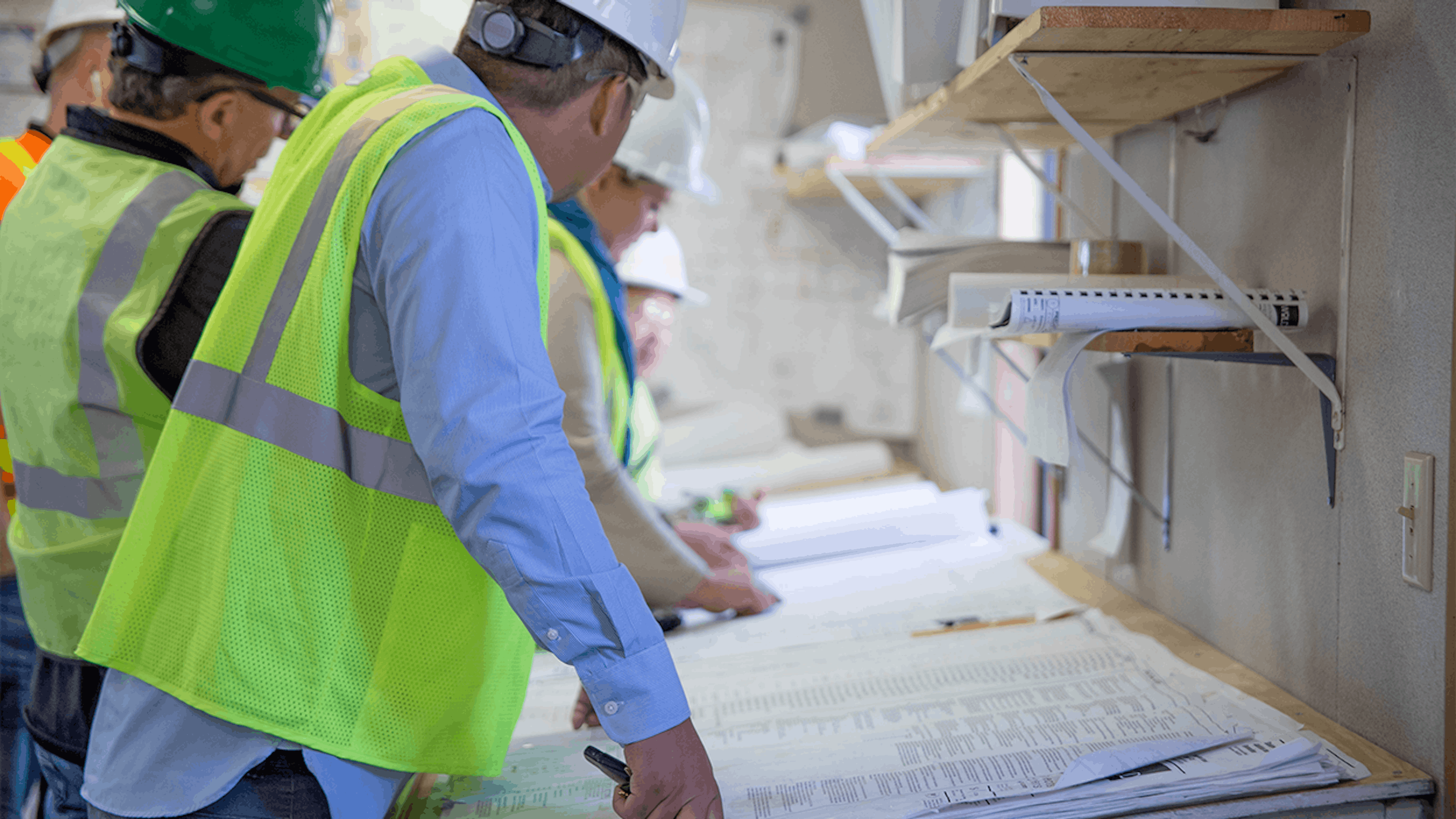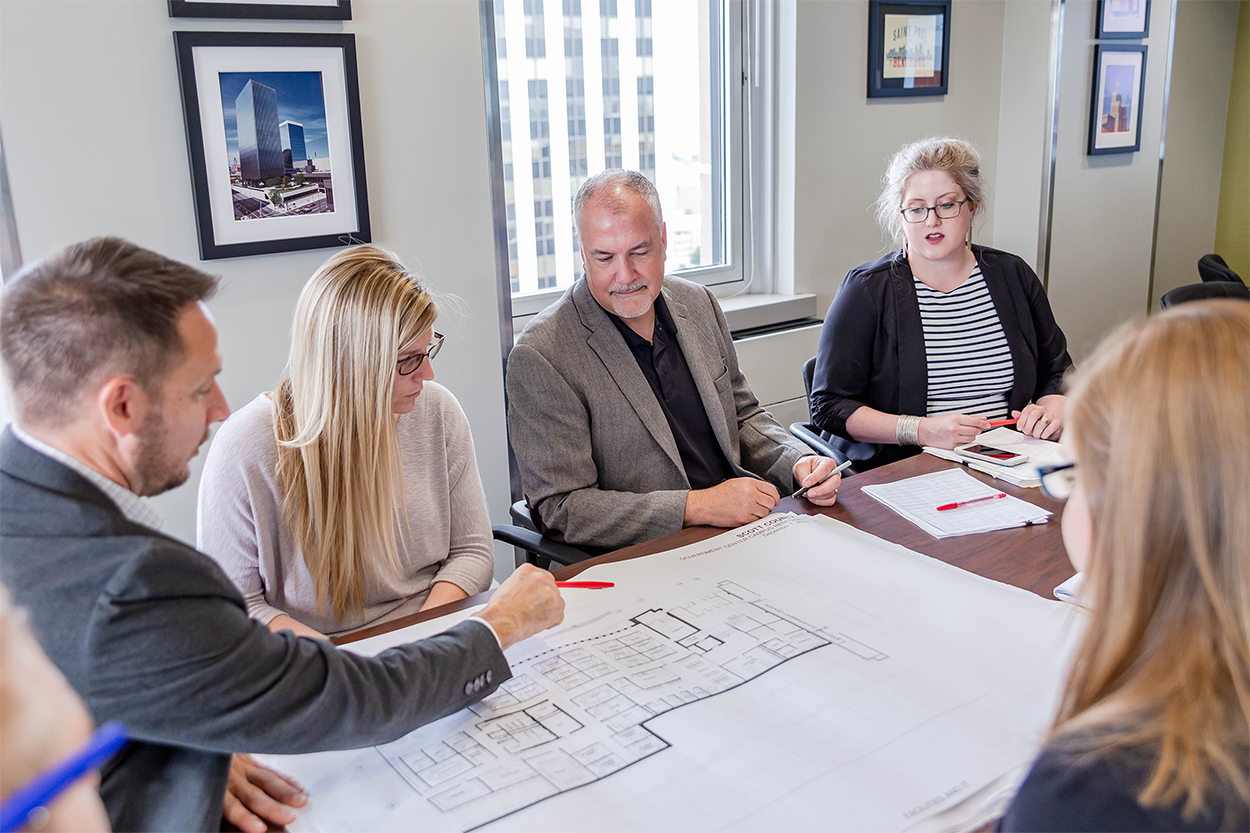
Congratulations! You've succeeded in demonstrating the need to improve, expand or replace your existing facility; and gained the approvals of your appointed or elected officials. Based on our experiences, we know that is often the most challenging part of any facility project —sometimes involving countless studies and master planning efforts spanning many years (and often several administrations). So what's next? It's time to engage the professional services necessary for implementing the various stages of the design and construction process.
For some, this is a very familiar process. Your community or agency may have a long track record of developing facility projects - or perhaps you have had the opportunity to be a part of bringing a significant construction project online. Yet for others, this process is a foreign concept; and the seemingly endless iterations, options and terms associated with the design and construction of public sector buildings is enough to make your head spin.
There is no single, one-size-fits-all approach to how best to work with the professionals needed to make your project a reality. This article intends to provide those who are not experienced, and who are looking for guidance, an overview of some of the typical design and construction delivery methods associated with public sector facilities:
Depending on the size and scope of your project, as well as the preferences of your community's leadership, there are a handful of key terms with which you should be familiar for public sector projects:

The design team typically comprises the Architect and their professional consultants. Depending on the project, those consultants may typically include civil engineers, landscape architects, structural engineers, mechanical engineers (including plumbing and fire protection), electrical engineers and interior designers. Some specialized consultants or designers may also be required for specific components of your facility, such as security systems, firing ranges, acoustics, etc. The design team will be responsible for leading the project from the initial concept through detailed document development all the way through construction. It will ultimately provide the "contract documents" (the construction drawings and specifications) that will serve as the tool for communicating the contractor's design intent. The design team will stay involved by partnering through construction with the builder and as an advocate to your organization to ensure that the design intent is met and your goals are achieved.
The contractor is the company that will be responsible for overseeing the construction of your facility. In the broadest sense, there are two forms of owner-contractor agreements that you need to understand:
A construction manager is typically hired at the beginning of the project (at or about the same time as the design team), and is involved in the pre-construction phases to assist with planning efforts related to budgeting, scheduling and constructability. This selection process is more often than not based on a combination of qualifications and fees. Once the design team has completed the contract documents, the construction manager will take the lead in soliciting bids from subcontractors for all of the various trades required to construct the project. The construction manager will provide project management and site supervision staff to oversee the project's day-to-day progress. In some instances, the Construction Manager may also be responsible for some portion of the actual construction. The varying types of construction management contracts should be reviewed before (or as part of) selecting a construction manager partner.
In the case of some smaller projects, or based on the procurement preferences of some communities, an alternative to hiring a construction manager is to utilize a general contractor delivery method. In this model, the design team's contract documents are issued to interested companies to develop and submit sealed public bids. Bids will be received from single prime contractors that will include in their lump sum pricing provision and coordination of all, if necessary, subcontractor trades required to construct the project. This selection process is more often than not based on the lowest responsible bidder, who will then act as the general contractor for overseeing your project's construction.
In some circumstances, an organization may not have a team of staff with the qualifications or available time to oversee a project. To assist in ensuring the goals of a project are met, an organization will allocate funding towards engaging a professional owner's representative. An owner's representative is responsible for oversight and assurance that the owners' goals are met. The representative often has experience in most facets of a project timeline and can help make sure projects are completed on time and under budget. An advocate for your organization, the owner's representative, helps mitigate potential issues from others on-site.
The design-build approach is a collaborative process that brings both contractors and designers, often under the same contract, together early in the development of a project. Upon selection of a designer and a contractor, the organization outlines goals and standards for the project. From there, both units work together in a collaborative process to ensure the project's goals are met. This type of contract often builds teamwork amongst separate entities and helps create a single point of responsibility if potential issues arise. The execution of this delivery method is subject to a number of variables, and its application depends on state and local regulations. Some guidance as to the appropriateness of design-build construction can be found at https://dbia.org/advocacy/state/.

Now that you've developed an understanding of the potential teammates you'll need for your project; the next step involves how their services are solicited and secured. Understanding the selection process is crucial for assembling a qualified team. The following are a few elements that may be included in your approach:
A common mechanism in selecting professional service providers is a Request for Proposal (RFP). An RFP is a business proposal that outlines your organization's upcoming project's details and goals to solicit costs from potential designers or contractors seeking to complete the project. The RFP usually outlines how organizations should format and outline their responses, including information about the organization, the qualifications of its assigned staff, and its prior experiences with similar projects. The RFP process will also ask interested service providers to stipulate the fees or costs for which they are willing to perform the identified scope of work.
Similar to an RFP, another tool that an organization may utilize is a Request for Qualifications (RFQ). Abstensively, the RFQ response format and components will look the same as the request for a proposal, with the only key difference being the exclusion of a fee. The RFQ model's premise is that an organization will make a qualifications-based selection and then negotiate a price with the highest-ranking responder. It will be vital that you seek to understand how your state and local statutes address the inclusion of fee in the selection process, and whether or not you are legally able to ask responders to provide their cost before evaluating their qualifications.
In either instance, both the request for proposal and the request for qualifications are effective means for identifying skilled teammates capable of performing the services your project will require. Commonly, these tools may be used to narrow down a large number of submissions to create a shortlist of candidates to meet within an interview setting.
Most professional services providers understand that crafting an RFP or RFQ response with or without the organization's goals in mind can make or break their chances of being selected. As mentioned before, there is no one size fits all to choosing the right organization for your design and construction projects. Instead, what matters is selecting partners that demonstrate an understanding of your organization, your objectives for hiring a consultant and your community's values. You will be working closely with the team you assemble throughout your project's development, a process that may sometimes take several months or several years. Thus, you have to be comfortable with the availability, capabilities, and personalities of the specific persons proposed to be your primary contacts.
Keep in mind, the information above is a summary of items that will be involved in the process of selecting design and construction services partners for your important project. If you need sample RFP or RFQ documents or have any additional questions about this process, do not hesitate to reach out to our team at Wold Architects and Engineers (call 1-888-254-6789 or email info@woldae.com).